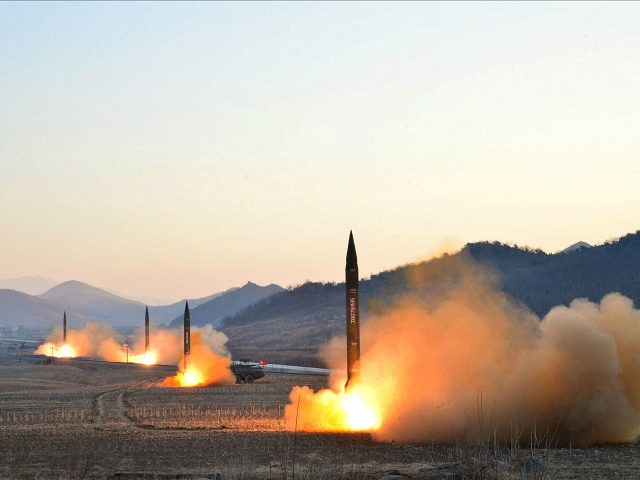Repercussions from North Korea’s latest illegal ballistic missile test continue as Japanese lawmakers are pushing for pre-emptive strike options against Pyongyang’s missile facilities.
“If bombers attacked us or warships bombarded us, we would fire back. Striking a country lobbing missiles at us is no different. Technology has advanced and the nature of conflict has changed,” said former defense minister and Liberal Democratic Party committee head Itsunori Onodera, as quoted by Reuters.
The LDP is the party of Japanese Prime Minister Shinzo Abe, who has been seeking to develop a more aggressive military posture for his pacifist country and sometimes meeting spectacular levels of resistance.
According to Reuters, North Korea’s provocations have spurred the Japanese to begin laying the “groundwork” for a “strike capability,” as one source put it.
LDP security policy chairman Hiroshi Imazu listed “ballistic missiles, cruise missiles, or even the F-35” as possible instruments of deterrence against North Korea. The F-35 is the new Joint Strike Fighter, boasting stealth technology that can enable pilots to “penetrate areas without being detected by radars that legacy fighters cannot evade.” Engaging ground targets is one of its possible roles.
Reuters’ sources said Japan was not confident of its ability to stop more than three North Korean missiles at once. Four of them were launched during this week’s provocative test. Also, the North Koreans have been developing solid-fuel rockets that can be moved around easily and “cold-launched” with little preparation. Unfortunately, these advances also mean Japan, South Korea, or U.S. forces would have trouble carrying out a pre-emptive strike.
Missile defense seems like an appealing option under those conditions. Unfortunately, China and Russia strongly object to the installation of defenses like the THAAD system. CNN explains that THAAD (Terminal High Altitude Area Defense) would give Japan an additional layer of protection, on top of the Aegis warships and Patriot missile batteries Japan has already deployed. It would also give more notice of a North Korean missile launch with its highly advanced radar. In fact, the THAAD system being deployed in South Korea would have been capable of detecting the missiles North Korea fired at Japan on Monday and relaying tracking data to Aegis missile defense ships.
On the other hand, there has never been a real-world test of either THAAD or the Aegis system against a massive long-range ballistic missile attack, while the Patriot is mostly known for knocking down short-range missiles. Japan may come to see the reliable retaliation power of its long-range missiles and stealth fighters as the best deterrent against North Korea.

COMMENTS
Please let us know if you're having issues with commenting.